
In an earlier article by this author (‘To sleep, perchance to dream’), recounting the misfortunes of two ‘Scandinavian’ type small cargo ships, serves as a reminder that many of the hazards of seafaring of yesteryear are just as valid today, whether in war or peacetime conditions.
This led to consideration that many earlier generations might recall the larger wartime built ‘Empires’, their North American built counterparts, the ‘Forts, Parks’ and ‘Oceans’ and, of course the ‘Liberty’ and ‘Victory’ ships solely of U.S. build, together with the associated privations of their war. Such ships may however be better remembered by post war generations in their peacetime guise, with many ultimately operating as tramps under flags of convenience.
The War Standard ‘Scandinavian’ type, was designed by Wm. Gray of West Hartlepool as a somewhat smaller general purpose steam tramp and all as laid down, accorded an ‘Empire’ prefixed name, to the order and ownership of the U.K. Ministry of War Transport. Whilst referred to by some as ‘The Hartlepool Jeep’, this class was rather less well known than the collectively superior numbers of its larger sisters as referenced above.
38 units of the class were constructed by six U.K. shipyards, including Ailsa SB. Co., Troon (6), Caledon SB & Eng. Co., Dundee (1), The Grangemouth DY. Co. (2), Wm. Gray & Co. (24), Sir J. Laing & Sons, Sunderland (1) and Lithgows Ltd., Port Glasgow (4).
Inelegant slow speed workhorses, they were without glamour, but proved to be a particularly effective three island design ideally suited to the vagaries of wartime operations. With a deadweight capacity of 4,700 tons, unobstructed welldecks, high substantial bulwarks and all cargo handling equipment set above and clear of the main deck, they were as their type description suggests, particularly suited to the carriage of timber cargoes and the bulk trades.
They were however quickly to prove highly amenable after minor modifications including the addition of a range of deck mounted eyebolts, to the carriage of military stores, crated or partially assembled aircraft and heavy deck cargoes including tanks, earthmoving equipment and the like. Indeed, during the era of the North Russian war supply convoys, ports such as Archangel, Murmansk and others, were found to be poorly served in terms of shore based cargo handling facilities. A solution was devised where a number of ‘Scandinavians’ were adapted, per builders’ description as ‘craneage ships’, to incorporate specially strengthened and heavily built mid well deck located masts, initially supporting two 50 ton (SWL) heavy lift derricks and later 1 x 50 ton and 1 x 80 ton plus 2 x 15 ton and 4 x 5 ton SWL derricks, or on several vessels, 2 x 80 ton and a mix of load capacities for lesser derricks. For extra ‘reach’ purposes, several vessels including the Caledon built Empire Bard for example, were equipped with extended length derricks, the dimensions of which almost equalled the overall length of the well decks they served, with one serving hold #1 and foredeck mounted cargoes via a fo’c’sle located specially strengthened kingpost and the other serving hold #4 and afterdeck cargoes via a similarly strengthened poop mounted kingpost. Such vessels were then positioned alongside at Russia’s northern ports, often for periods extending to many months, for the specific purpose of transferring cargoes whether heavy, outsize or otherwise, between outboard moored larger inward supply vessels and the quay, particularly those with no or limited heavylift capability, or on many occasions to quite simply otherwise shorten the port turnrounds of such inbound ships, thereby reducing their risks attached to frequent, almost constant German aerial bombing sorties.
This solution thus released larger specially constructed heavylift vessels such as the Norwegian design origin class of 10 ‘Bel’ type engines aft circa 10,000 dwt 15 knot ships constructed by two Vickers-Armstrongs yards and the Greenock Dockyard Co. from 1942 onwards, with each vessel equipped with 3 x 120 ton SWL and six smaller capacity derricks collectively serving three separate holds, for much needed tasks in other theatres of war. In addition, the ‘Empire Malta’ class of 8 smaller vessels, (plus two others without high capacity ‘jumbo’ derricks) of broadly similar overall dimensions to the ‘Scandinavians’ but of engines aft/bridge amidships configuration, were designed by the Admiralty’s Merchant Shipbuilding Department and constructed between 1944-45, exclusively by Wm. Gray of West Hartlepool, initially for the carriage of cased oil, bulk coal or general cargoes. They could, however with their single 80 ton and 50 ton derricks (plus 8 x lower capacity equipment), double as heavy lifters and be usefully employed in other arenas.
Six MoWT ‘Scandinavians’ were lost as a direct consequence of war, including three Lithgow built sisters, two from the Grays yard and the last from the Grangemouth Dockyard, all torpedo sinkings during the 1941/42 period. The seventh and last casualty during the war was a Lithgow ship, lost through collision and sinking in the Scheldt during 30th November 1944.
With two exceptions which had been subject to early (1942) sale to the Norwegian Government (Empires Carey and Pilgrim as Ragnhild & Astrid respectively) and a further four the following year. Empire Launcelot, a 1942 Ailsa built example sold to the Belgian Government when renamed Belgian Trader and registered at Antwerp, Empire Toiler another 1942 Ailsa built example sold to the Dutch Government when renamed Van Ostade and registered at Amsterdam, Empire Jessica, a further Ailsa built ship renamed Joseph Blot, the first of two sold to the French Government and registered at Rouen, together with Empire Sedley, purchased during 1945 and renamed Intendant J. Patrizi. It was not until late 1945 that the MoWT through its Government Ships Disposal Scheme, began to release the surviving fleet from the war management commitments undertaken by a host of U.K. based mainly tramp operators, for onward sale to British and European Allied nation commercial ship owners, by way of urgent, often interim replacements for huge war losses.
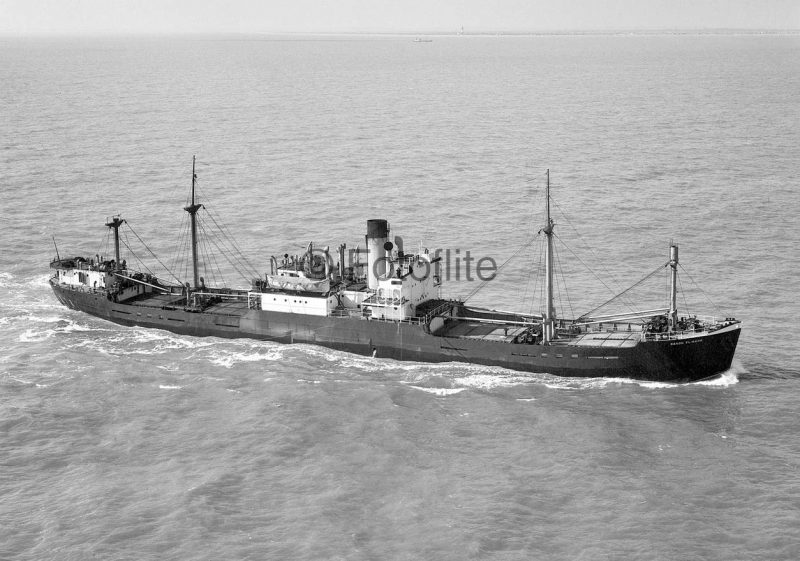
Hugh Hogarth’s Baron Line, which during hostilities had managed four ‘Scandinavians’ for the MoWT, during 1946 purchasing two of them plus a third previously managed elsewhere and renamed them Baron Elibank, Baron Ailsa and Baron Elcho respectively with PoR, in accordance with Company tradition, at Ardrossan. They proved useful, particularly in the post war resumption of what had been their subsidiary Iberia Shipping Co’s. 1922 established liner service carrying mainly coal southbound to Lisbon and Huelva, with return cargoes of Spanish iron ore, other concentrates or North African origin phosphates or esparto grass. As larger newbuilds to the company’s specification were introduced, the three were sold out of the fleet between 1955 and 1959.
The Newport, Monmouthshire based tramp operator Richard W. Jones who had since war’s outbreak managed a number of miscellaneous vessels for the MoWT, were during 1944 awarded management of their first Scandinavian, the newly completed Grays built Empire Osbourne. During December of that year she was mined whilst negotiating the lower reaches of the Seine, but quickly repaired and returned to service. By war’s end, the Company had lost all of its owned fleet and set about to rebuild it, initially by purchase of Empire Osbourne during 1946, renamed Uskport. A second Scandinavian laid down as Empire Warner was purchased by them whilst fitting out at the Ailsa Shipbuilding yard at Troon when renamed Uskside. She was in fact the last Scandinavian to be completed of the original MoWT order. Clearly, Jones’ two ships with their extra height weatherdeck bulwarks as standard, securing the carriage of deck cargoes, appeared well suited to the Company’s resumption of their prewar trades. Reduced shipments of coal from South Wales saw increase in shipments from the Northeast ports, Rotterdam and Antwerp to Spain and Italy, with initial focus on resumption of return cargoes of esparto grass (for paper manufacture including banknotes) from Libya, Tunisia and Algeria, primarily for discharge at Granton and later Grangemouth on the Firth of Forth. A third ‘Scandinavian’ Empire Valour, initially managed by Glasgow’s Glen & Company and during 1948 passed to and later acquired by the northeast based Eskgarth Shipping Company but resold during 1951 to Richard Jones when renamed Uskmouth.
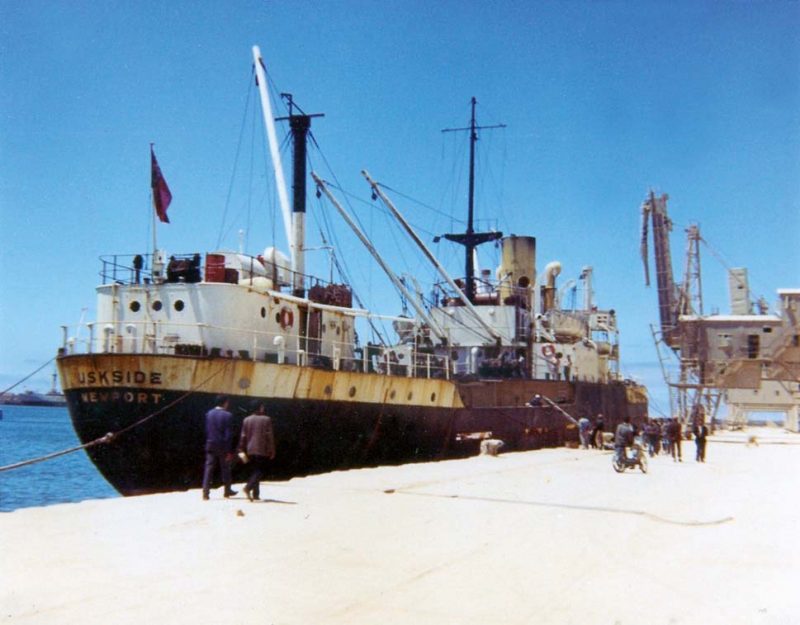
Around this time, all three units of the fleet were converted from coal to oil fired boilers. An unexpected reduction of the esparto trade during the late 1950s, caused the Company to seek and secure alternative northbound cargoes through agreement with a Dublin based fertiliser manufacturing company to establish regular shipments of raw phosphates from the Moroccan ports of Casablanca or Saffi for discharge at Cork or Dublin. Occasional forays were also made to the Baltic for pit props and occasionally in ballast to Eastern Canada for sawn timber and other related products. Due to a temporary increase in vessel values, a consequence of the improved freight rates of the mid 1950’s, the opportunity was taken to dispose of the Company’s first Scandinavian, Uskport during 1957, as a means to improve capital reserves prior to placing an order for their first post WWII newbuild to their exact specifications with Ailsa of Troon. Uskmouth was withdrawn from the fleet during 1963 when replaced by Tate & Lyle’s 1955 Aberdeen built motor ship Sugar Importer and renamed Uskport. Their final Scandinavian, Uskside, was sold to Greek owners during 1965 after a creditable 19 years of service for her Welsh owners. She continued trading as the Chios registered Gero Michalos until 10th May 1968 when during the final stages of loading a Ceylon (Sri Lanka) destined consignment of rice at the northwest Burmese (Myanmar) port of Akyab (Sirte), she was trapped in a cyclone and wrecked, being declared a CTL two days later.
One Company which clearly found the design particularly suited to its operations in peace and war, was the Leith based Currie Line. Their first exposure to the type was when tasked by the MoWT to management of the Caledon built Empire Bard, completed at Dundee during March 1941 and later, during September 1942 with the management of a further example, the Grays built Empire Boswell. That same year the Company took delivery of two additional essentially identical vessels originally intended for the Baltic timber trade, Lapland and Iceland (to replace earlier war casualty namesakes) completed by Caledon to Currie’s private account. Upon delivery, they were requisitioned for War service and later, including Empire Bard, modified and equipped for the heavy lift and Russian ports ‘craneage’ operations described earlier. During 1946, the Company also acquired an Ailsa built example, Empire Crusoe, completed one year earlier at Troon and renamed Greenland. Interestingly, during 1948 this owner accepted delivery of two slightly more modern looking Caledon built steamers, Woodland & Pineland, fundamentally ‘Scandinavians’ in design but with soft plated bows rather than the bar stems of the original and increased power propulsion machinery, rendering them some 2 knots faster. Initially intended for the Company’s Eastern Canada coal out, timber home trade, they featured the War standard design’s deck layout and cargo handling equipment. They were some 10 feet shorter than the ‘originals’ due to reduced peacetime crewing requirements via reductions mainly to stokehold numbers as a consequence of conversion from coal to oil for the boiler furnaces, obviating the need for ratings’ poop accommodation (transferred amidships).
The Burnett S.S. Company of Newcastle acquired two Wm. Gray built examples of the original class during 1946, renamed Burnhope and Wallsend, retaining them until 1959/60 on mainly U.K. coal trade, Great Lakes and timber product related services, when replaced by new tonnage of all-aft motor ships.
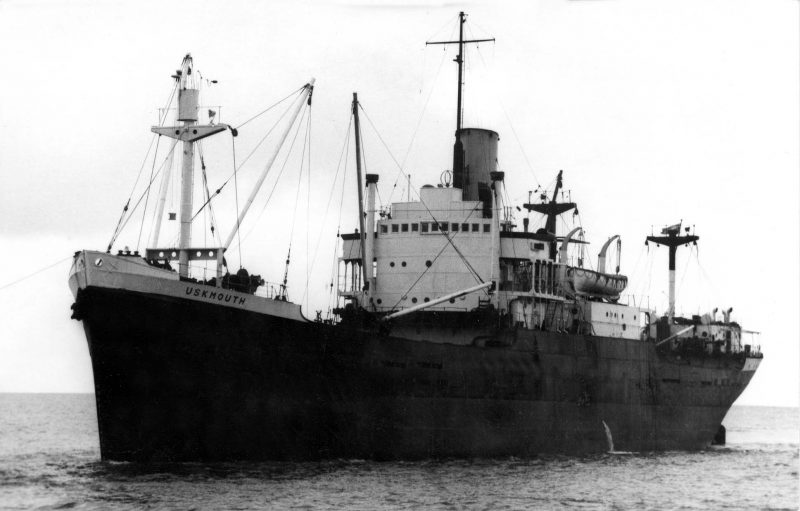
Also operated on Great Lakes post war services (summer only) and the Eastern Canada coal/timber trade were two examples of the class by the Dundee, Perth & London Shipping Company, the first acquired directly from the Ministry of Transport, (post war successors to the MoWT) during 1946, the previously Currie managed Empire Bart, but later by D.P.& L. themselves, duly stripped of her somewhat specialised wartime deck equipment and renamed Angusburn. During 1951/52 she was converted to burn oil fuel. The second unit, the Grays built Empire Beaconsfield, previously managed then acquired by Constants (South Wales) Ltd. during 1946 as Hawkinge, was bought by D.P.& L. during 1951 and renamed Angusbrae. Whilst obtained specifically for mainly Mediterranean tramping operations, both ventured far and wide from North Russian and Baltic ports, Indian Ocean, Caribbean and North American east coast ports until 1954 and 1956 disposal respectively.
Constants bought a second ‘Scandinavian’ during 1950 from Borchard Lines U.K. Ltd., Lucy Borchard, ex Empire Melody of 1942, the second of only two examples of the class to be completed by the Grangemouth Dockyard, and renamed her Nordeflinge. During 1955, ex Greenland of the Currie Line of Leith was a further Constants acquisition when renamed Heminge with London registered ownership and for operations with coal outbound and iron ore from Bilbao, Santander or Huelva homewards. Alternative homewards cargoes consisted of cork from Oporto or pyrites from other Portuguese ports. She was resold the following year to Liberian flag operators.
N.W. Purvis’ Aviation & Shipping Company purchased during 1947 two Grays built examples of 1942 and 1943 completion, the Empire Boswell, as referenced above, first managed by Currie of Leith, then from 1945 by the British India Steam Navigation, and Empire Harmony, renaming them Aviswell and Avisbrook respectively, so establishing a low cost tramp operation of warbuilt ships whose names were prefixed ‘Avis’. The pair were sold out of this fleet in the 1949-50 period to F. T Everard, Greenhithe and Thomas Stone Shipping of Llanelly when renamed Seniority and Menastone respectively.
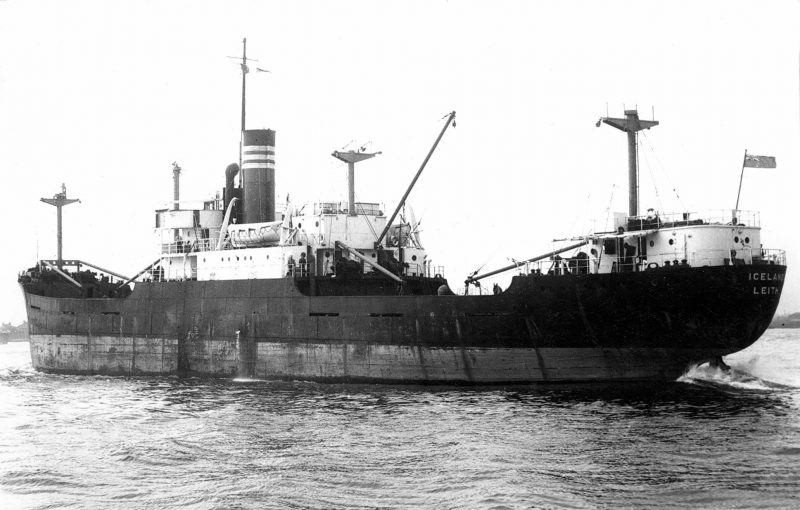
Two notable examples of the class were the Gray’s built Empire Mountain and Ailsa’s Empire Dirk, both of 1943, purchased during 1951 by Moller Line (U.K.) Limited and registered at West Hartlepool and Troon respectively. In short order, they were reregistered to the ownership of The Mount Line when renamed Mount Parker and Mount Austin respectively. During 1952 the pair was acquired by the Australian Shipping Board and initially registered at London under the names Carcoola and Coolabah respectively. Following modification and modernisation, including a significant increase to crew accommodation involving the addition of a second deck of housing atop the existing poop deckhouse and similar treatment at the aft end of their boat decks, all to attain Australian ‘standards’, they were placed on operation of the Callide coal trade from Gladstone to Sydney and Melbourne. Their PoR was during 1954 transferred to Melbourne, Vic. to fly Australia’s Red Ensign. Photographs of these vessels indicate that the pair were adorned in the funnel markings trading in continued Government ownership under what in time came to be known as The Australian National Line. Their disposal was effected during 1956 to Hong Kong owners, the Cambay Prince S.S. Co. (John Manners & Co., Managers) when renamed Tees Breeze and Troon Breeze respectively. Following two further transfers of ownership and renaming for continued operation under the flag of Panama during 1964, both were scrapped during the 1967-68 period.
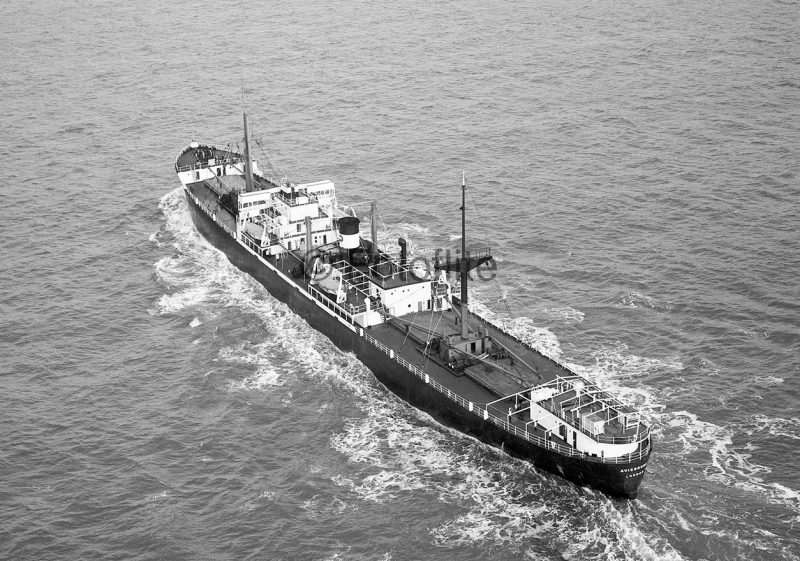
Single units of the class were acquired by a number of mainly U.K. owners at war’s end and included the following:-
- Empire Wolfe of 1941 Grays build was managed by G. Heyn & Sons of Belfast from new and during November 1945 purchased by their associated Ulster Steamship Ltd. for Head Line operation and renamed Wicklow Head. On 2nd May 1947 whilst on a ballast voyage from Ardrossan to St John, New Brunswick, she stranded at Joli Point, Nova Scotia and in later worsening weather conditions, began to break up halting salvage attempts. She was declared a CTL during the following month.
- Empire Elgar of 1942 Grays build was acquired during 1947 by the Dover Navigation Co. of Dover and renamed Sea Minstrel. During 1951 she was passed to the London based Drayton S.S. Co. when further renamed Marandellas.
- Empire Patriot also of Grays 1942 build and managed for the MoWT by the Currie Line until 1945 when passed to the management of Leith based Christian Salvesen’s South Georgia Co. Ltd. and purchased by them during April 1946 when renamed Struan. She was utilised for general tramping duties when not engaged in supply services for the Company’s whaling operations off Norway, the Arctic and Antarctic. 1959 saw her laid up on the Forth and sold during 1960 to Greek owners for continued trading under the Lebanese flag.
- Empire Record, a further Grays 1942 build was passed upon completion to J.A. Billmeir management and acquired during 1948 for their Stanhope S.S. Co. when renamed Stanway. Acquired by Comben Longstaff’s Williamstown Shipping Company during 1951 she was renamed Yorkbrook. Three years later ownership was registered to Norwegian flag operators (described later).
- Empire Caxton, yet another Grays 1942 completed example was purchased by the R. S. Dalgleish owned Watergate S.S. Company during 1945 when renamed Letchworth and during 1956 sold on to U.K. owners Sagland Ltd. of London when further renamed Peterland, passing to foreign flag owners three years later.
- Empire Gareth on completion by Grays during 1942, was placed with the management of Hull based Walter H. Cockerline and during 1947 purchased by them when renamed Athenic. During December 1954 she was passed to Swiss ownership and renamed Astarte, transferring to Greek owned Lebanese flag operators some 6 years later, subsequently further renamed Yanix and Nicos.
- The 1943 Grays built Empire Candida managed by Turner, Brightman’s ‘Z’ S.S. Co. Ltd. was sold during 1947 to the Zinal S.S. Co., London and renamed Burdale and the following year returned to the ‘Z’ Steamship Company of Newcastle as owners and renamed Peldale.
- During 1946 the Grays 1943 built Empire Gulliver was sold to the Bharat Line, when renamed Bharatkhand and registered at West Hartlepool before transfer during 1954 without change of name or ownership to the Indian Flag for registration at Bombay from where she continued operations until scrapped during September 1962.
- The sole Sir J. Laing of Deptford built Scandinavian, Empire Thackeray was managed upon completion during 1942 by the London based Rodney Steamship Company, purchased by them during 1946 and renamed Thackeray. During late December of that year, she was driven ashore at Outer Cat Island, off Argentia, Newfoundland. Refloated, she was towed to St Johns, NF. for repairs and later sold.
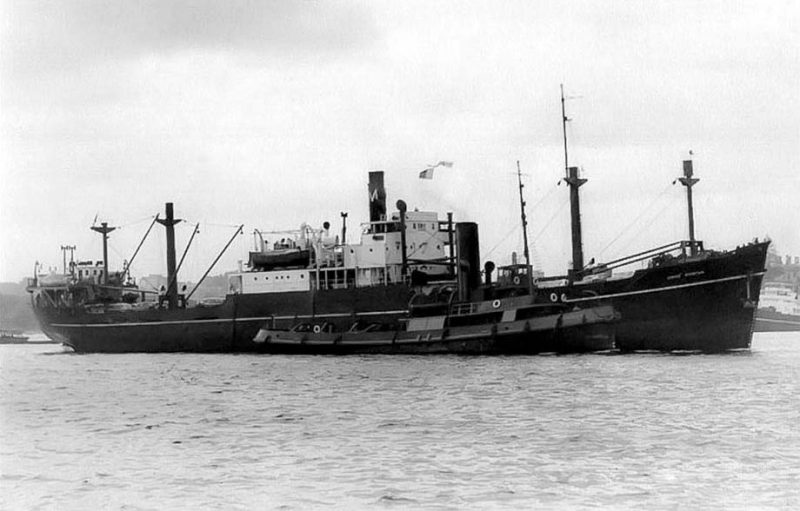
Late entrants to the operation of ‘Scandinavians’ included the Bergen based Jansens Rederi A/S who during 1954 acquired Comben Longstaff’s Yorkbrook (b. Empire Record) and during the same year the ‘Z’ Steamship Company’s Peldale (b. Empire Candida), renaming them Elisabeth Jansen and Statius Jansen respectively. Two years later they acquired Drayton Steamship’s Marandellas (b. Empire Elgar) when renamed Edward Jansen. Their fourth and final unit of the class (b. Empire Pilgrim) was purchased from another Norwegian flag owner and renamed Ingvar Jansen. The quartet was resold during the 1959-60 period to a variety of mainly Eastern Mediterranean owners.
During 1955 the Rotterdam based W. H. Muller & Co. purchased Hogarth’s Baron Ailsa, ex Empire Harcourt, renaming her Iberia and the following year, Angusbrae of the Dundee, Perth & London Shipping Company, ex Empire Beaconsfield, renamed Hispania, for their owner’s Batavier Line operations, as their names suggest, to Spanish ports.
As previously stated, six examples of the class were lost due to enemy attack. Post war, a further seven were lost due to accidents or other causes – groundings, fire or collision etc. The remainder were subject to scrappage with the last of the original Scandinavian ‘Empires’ fleet seemingly deleted from the register(s) around 1974 and the last of the type constructed to private account, scrapped at Eleusis 1979.
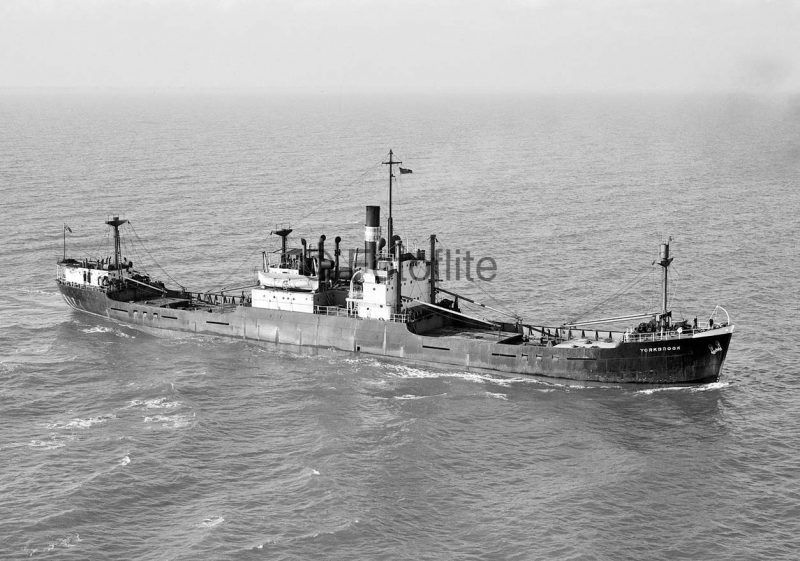

To wartime emergency standards, equipment specification as can be seen below, was fairly rudimentary. Basic design criteria of the War Standard ‘Scandinavian’ Type general purpose vessel was as follows:-
- Hull configuration: Three island type with bar stem, cruiser stern, single deck.
- Dimensions: 328 (loa) x 315 (lbp) x 46 x 25 feet.
- Tonnages: 2,800 (GRT), 4,700 DWT, 1,700 net.
- Propulsion Machinery: 1200 IHP three cylinder (triple expansion) steam reciprocating engine (20/31/ 55-59/39) at 200psi H.P. steam from two single ended coal fired boilers. Over 65% of engines were constructed by the Grays owned Central Marine Engine Works, West Hartlepool with the remainder primarily by N.E. Marine Engineering Co. Ltd., Wallsend-on-Tyne and Sunderland. From the early 1950’s and due to the improved supply situation, most owners progressively converted their vessels to oil fuel. This resulted in reduced E/R manning requirements, improved fuel efficiency and increased cargo space.
- Speeds: Maximum hull 10 knots. Loaded service: max. 9 knots.
- Steering gear: Manual rod and chain deck mounted type. (Nil autopilot).
- Compasses: Magnetic Steering & Standard (and nil gyro stabilised).
- E/R telegraphs: Manual chain/ cable.
- Voice communications to Master & E/R: Speaking tube.
- Galley: Coal fired range.
- Crew: As designed, 39 including Master, plus up to 10 (DEMS) Gunners. Officers’ accommodation amidships. All others aft.
Canadian builds: To relieve wartime pressures in the worldwide transportation of war materials and supplies and following a limited series of broadly similar but smaller three island design ships built in Eastern Canada during the latter half of the 1914-18 war of wooden and steel construction, the ‘Scandinavian’ design plans of Wm. Gray & Company were passed to Canada during 1942, resulting in the completion between 1943 and late 1945 of 43 examples to the order of the Canadian Government’s Crown Corporation owned Park Steamship Company Ltd. by four of the Country’s somewhat smaller Maritime Provinces shipyards in the form of three build standards, 27 units to the original design specification, 10 to a ‘Revised’ type with modified central welldeck located masting/derricks and resulting increased accommodation layout and 6 x ‘Dominion’ type with an added ‘tween deck.
Shipyards were: The Davie Shipbuilding & Repair Company of Lauzon, Quebec (7 units), Foundation Maritime Ltd., of Pictou, Nova Scotia (24 units), The St. John Drydock & Shipbuilding Co. Ltd. New Brunswick (8 units) and the Morton Engineering & Drydock Co. Ltd., Quebec (the remaining 4 units).
Of this fleet, 10 were engined to the original Gray’s triple expansion, coal fired boiler specification by the Dominion Engineering works of Montreal and the remainder by Canadian Iron Foundries at Trois Rivieres, Quebec.
All were laid down with ‘Park’ suffixed names with 6 units launched however without this suffix. Records reveal that only 2 of the total of 43 built were lost through enemy action, with the 1944 Pictou built Avondale Park torpedoed on 7th May 1945 whilst 1 nm SE of The Isle of May, Firth of Forth, with the dubious distinction as the last Allied vessel to be sunk during WWII.
Whilst small numbers of the Canadian built ‘Scandinavian’ type were registered to the MoWT at London during hostilities and given ‘Camp’ name prefixes, records reveal that only five units were registered to post war U.K. commercial ownership. These were Sugar Producer (ex Oakmount Park) during 1950 to Silvertown Services and managed by R.S. Dalgleish until 1956 when passed to Shamrock Shipping ownership as Curran. Liverpool Packet (ex Argyle Park) from 1946 Canadian owned against the Liverpool registration of the Dover S.S. Co. was transferred to Bowater Steamship Co. registered ownership but retained the PoR of Liverpool from 1960 until her 1963 disposal. Sundale (ex Bloomfield Park), Sundial (ex Wentworth Park) and Sunprince (ex Shakespeare Park), from 1948 registered at Montreal to the ownership of Saguenay Terminals Ltd., were transferred to the Company’s U.K. subsidiary of the same name and registered at London from 1954 until 1958, 1958 & 1960 respectively, when sold out of the fleet.
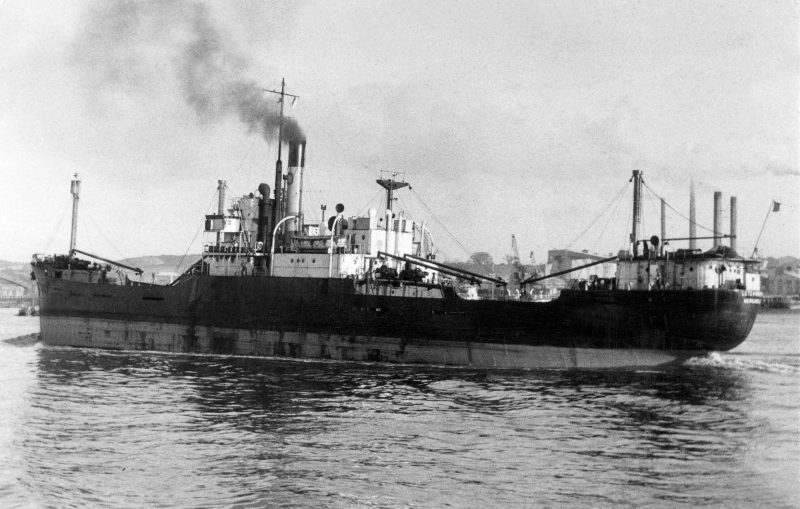
The US Built ‘Jeeps’
During 1941, the MoWT, in acknowledgement of the high attrition rates experienced in the convoy system in all applicable theatres of war, identified the need for a significantly larger number of merchant ships, including replacements, than our domestic shipbuilders were capable of producing, taking overall account of the massive and commensurate demand for naval and merchant vessels to successfully execute the war. This need included that for a smaller general purpose/utility merchant vessel suited to coastal operations and of a design capable of carriage of a variety of military stores including on-deck stowage. The matter was addressed with the U.S. Maritime Commission and which led to their conclusion that an updated version of a design originally utilised during WWI and which featured a three island deck layout consisting of unobstructed well decks, with cargo handling equipment located clear of them, would satisfy such need. Improvements included cruiser sterns and oil fuelled boiler furnaces rather than coal. The British authorities however, having identified a requirement for 36 such vessels for U.S. construction, also specified coal as the fuel source due to readily available U.K. domestic stocks, taking into account the need to preserve imported oil fuel supplies for other uses.
What eventuated was a steamer of exactly the profile of, but with somewhat smaller dimensions and capacities, to that of the U.K. ‘Scandinavian’. The U.S. developed three marques of the model designation N3 for a planned total of 126 units consisting of 36 U.K. specification (coal fired) steam reciprocating vessels (N3-S-A1). The first five examples of the latter were completed during 1942, with the remainder delivered to the MoWT by the end of 1943. A planned 76 similar but oil fuelled examples (designated N3-SA2) of which an initial 23 were allocated to the U.S. War Shipping Administration for U.S. Army use including 19 allocated to the SW Pacific theatre. All but 17 cancelled units of this model were completed during the period of March 1944 to November 1945, some of which in time found their way to Greek, Polish and U.K. commercial operators under the Lend-Lease system. Both coal and oil fuelled examples were involved in the June 1944 D-Day landings, drying out for effective supplies transfer to military vehicles. A third model, designated N3-M-A1 of which 14 examples only were produced exclusively by the Penn-Jersey Shipbuilding Company at Camden, New Jersey, was a diesel powered engines aft vessel. Four units of this model were passed under separate agreement to the MoWT, with management responsibility vested in the Currie Line of Leith. 1 unit was retained by the U.S. Navy and the remaining 9 allocated to the U.S. Army for use as repair ships.
Outline specification of the U.K. standard (N3-S-A1) vessel, commonly referred to as the ‘Jeep’ included:-
- Overall Dimensions: 258’09” x 42’01′
- Tonnages: (circa) 2430 grt, 2,905 dwt
- Propulsion Machinery: 1,300 shp triple expansion coal fired steam engine
- Service speed: 10.5 knots
- Crew: 23 (excluding DEMS personnel as applicable)
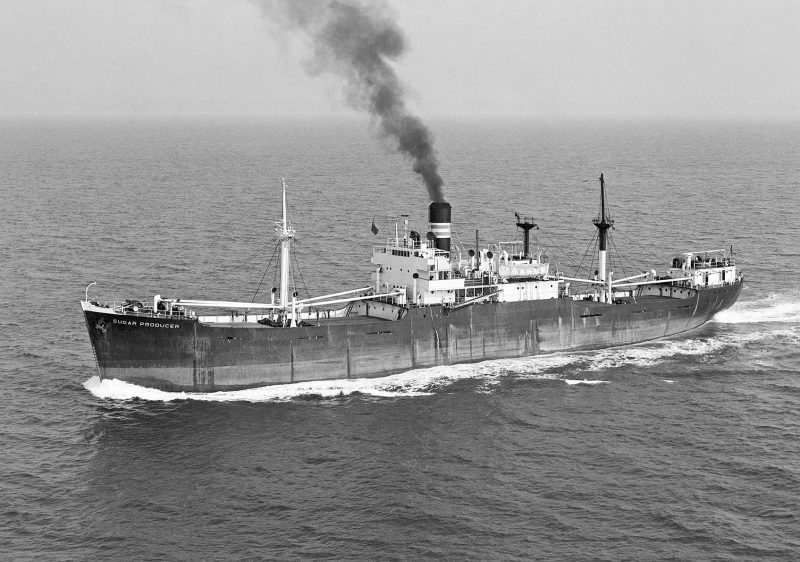
Of the 36 ships ordered by the MoWT, 2 were lost through hostile action and 3 to accidents, groundings etc. Two units of this fleet were sold during 1947 to the Chinese Government with disposal of the remaining 29 undertaken between 1949 and 1951. Apart from 2 examples sold to Hong Kong owners, all others were acquired by U.K. registered owners led by the Glasgow based Glen & Co. with four units, Currie Line and G. Heyn & Sons Head Line with three each plus six other owners purchasing two such vessels each. This included a pair for Elder Dempster Lines’ use on the Nigerian coast coal trade in what proved to be an abortive venture when such business all but dissolved at about their time of delivery. The remainder were sold to owners acquiring one unit each and included Coast Lines, F.T. Everard, Eskgarth Shipping Co., Melan Shipping and Coker Ltd., of Liverpool.
A number of these vessels were converted to oil fuel during the early years of their peacetime operations and whilst freight rates remained buoyant. Several units were re-engined with diesels. As owners took delivery of newbuilds to their exact specifications throughout the 1950s and later, the ‘Jeep’ fleet began to disperse, many to Scandinavian, Greek and flag of convenience operators.
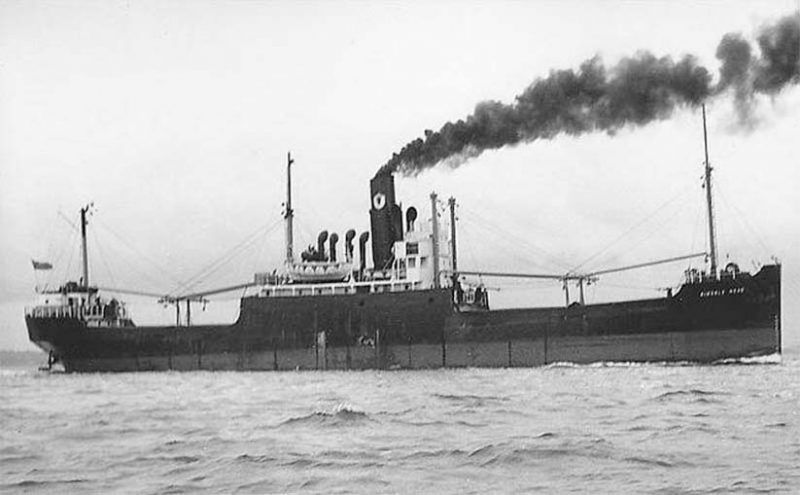
The German ‘Hansas’
It is noted that during WWII, Nazi Germany also embarked on an emergency programme of construction from 1942 onwards of a planned 200 War Standard merchant vessels in three class sizes, Hansa ‘A’, ‘B’ and ‘C’. Their Kriegsmarine demanded priority however in Germany’s yards, and whilst significant numbers were constructed there, volume construction necessitated the use of shipyards in occupied countries including Holland, Belgium and Denmark.
The smallest of the three designs and the most numerous, was the Hansa ‘A’ class, of which a total of 69 examples were constructed both in Germany and the occupied countries. Due to steel shortages, Kriegsmarine intervention and obstruction together with sabotage in the occupied countries’ yards, extended delays were evident, with a number of hulls far from complete or indeed damaged through allied actions before V.E. day. Whilst smaller than the U.K. originating ‘Scandinavian’ type, Hansa ‘A’ was the equivalent vessel in function to them. Under wartime conditions however, their operations were generally restricted to within the Baltic Sea. Whilst not of the three island single deck configuration, they were ‘tween decked and featured a flush cargo handling weather deck plus fo’c’sle, but with an unobstructed area for on-deck cargo stowage on the after deck only. Dimensions of the Hansa ‘A’s’ varied from shipyard to shipyard, indeed often significantly from ship to ship within any one yard, but approximated at 298’ (loa) x 280’ (lbp) x 44.2’ x 27’ (Moulded depth) on a summer draft of 18.4 feet. Gross tonnage (approx.) 1,920 and (circa) 3,200 dwt. Whilst main machinery power was on occasion exceeded on a number of the class, specifications called for a 4 cylinder compound 1,300 ihp steam engine with 2 x coal fired boilers to return a service speed of 10 knots. Crew 26 + AA gunners.
Of a planned 49 units, later increased to 55, of the midsized vessel of the series, Hansa ‘B’, a total of only 32 were completed and delivered. Clearly recognizeable as a development of the Hansa ‘A’, they featured a similar ‘tween decked hull configuration but with two hatches each fore and aft, with fore and mainmasts serving four derricks each, set between each hatch. Whilst dimensions varied, they were approximately 360 (loa) x 338 (lbp) x 51 feet. Tonnages were (circa) 2,800 gross and 5,300 deadweight. All were powered by a 4 cylinder compound 1,800 ihp steam engine plus low pressure exhaust turbine, fed by 3 coal fired boilers to achieve a service speed of 10.5-11 knots. Crew 33 + AA gunners.
Only the lead ship of the largest Hansa ‘C’ 9,000 dwt class was constructed and shortly after delivery was sunk by Allied attack. With a crew of 46, she was fitted with a 4 cylinder compound steam engine of 3,000 ihp, with 4 x coal fired boilers to return a service speed of 12 knots.

Following cessation of hostilities, a system of war reparations was devised by the Assembly of the Inter Allied Reparations Agencies. This involved the seizure and confiscation by the Allies of 502 German merchant ships (leaving 95 dry cargo, 20 general cargo and 21 tankers to Germany as the basis for its post war economic development.) Within such reparations, the U.K. was allocated 136.5 + 11 incomplete, the U.S., 167.5 + 2 incomplete and the U.S.S.R., 183 + 2 incomplete vessels. (Appropriate financial compromise addressed the half ship issue between the U.K. and U.S.). By agreement both the U.K. and U.S. were held responsible for redistribution of certain allocations throughout applicable Allied nations and the U.S.S.R. to distribute an appropriate number to Poland.
Within the U.K. allocation, all of which were nominally owned by and initially given MoWT allocated ‘Empire’ prefixed names, 35 units were of the Hansa ‘A’ and 7 of the Hansa ‘B’ type. All were initially allocated to the management of a number of U.K. shipping companies, until sold either to such managers or elsewhere as shown below.
In accordance with the reparations agreement, 2 x Hansa ‘A’s’ were then passed to the Government of Canada plus one each to Belgium, Greece and Norway. The Russian Government shortly thereafter acquired 12 x Hansa ‘A’ and 2 x Hansa ‘B’ examples and the U.S., 2 x Hansa ‘B’s’ of the U.K. allocation.
Of the remainder, the undernoted shows their purchased disposition:-
Hansa ‘A’ ships
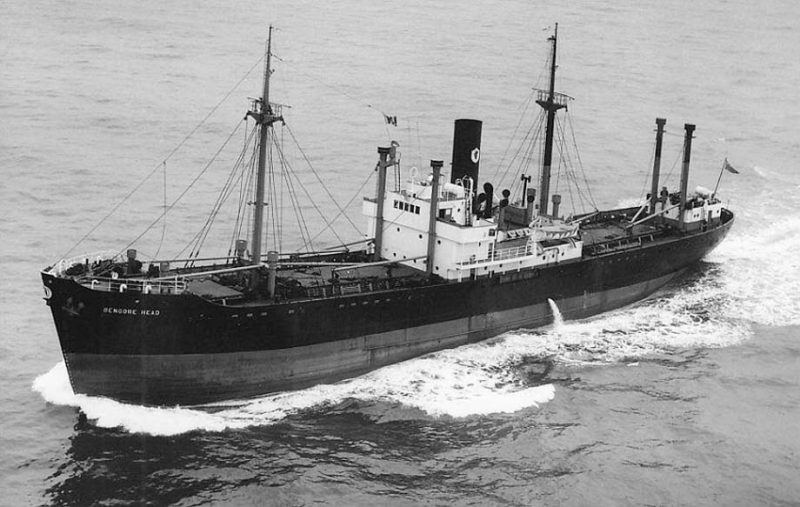
3 – United Baltic Corporation, London, 2 – Currie Line, Leith, 2 – General Steam Navigation, London, 1 – Glen & Co., Glasgow, 1 – G. Heyn & Sons, Ulster S.S., (Head Line), Belfast, 1 – Borchard Lines, London, 1 – Mundus Export & Shipping, London, 1 – Stratton Shipping, London, 1 – Hellenic Line, Greece, 3 – Straits S.S. Co., Singapore, 2 – Indo China Shipping, Hong Kong.
Hansa ‘B’ ships
1 – Submarine Cables Ltd., London (Lengthened conversion as cable layer), 1 – Fenton S.S. Co., London, 1 – Rodney S.S. Co., London.
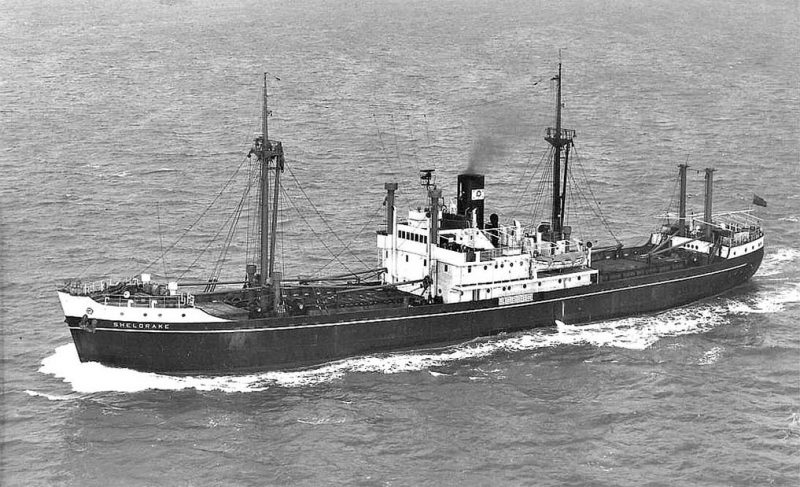
Whilst it is arguable as to which of the three nationality classes of warbuilts excelled in terms of efficiency, overall the ‘Hansa’s’ appeared rather more sophisticated and most certainly less rudimentary in terms of design equipment specification and modernity than either the Scandinavians or indeed the U.S. ‘Jeeps’. This is evidenced by the fact that certain U.K. owners happily disposed of their U.K., Canadian and U.S. build ships in favour of the ‘Hansa’s’ as they became available. Russia’s fleet was clearly much valued and over the years subject to much modernisation in terms of both re-engining and other equipment upgrades and on occasion improved external aesthetics to reflect a more modern look. The application of the compound 4 cylinder steam engine common to all ‘Hansa’s’, in spite of its perceived conceptual antiquity and by all accounts to the original design of the Hamburg based Christiansen & Meyer, appears to have been universally accepted to the satisfaction of shipowners. Indeed such was the favourability for this machinery that the Glasgow based Glen & Company via their Clydesdale Shipown-ers Company, specified its installation in their last ever newbuild, the Alexander Hall & Co. Aberdeen built, under subcontract from the Burntisland Shipbuilding Co., in April 1957 the 2,234 grt short sea cargo vessel Winga.
As with the original ‘Scandinavians’, their Canadian built counterparts and the US built ‘Jeeps’, the ‘Hansa’s’ proved in the main to amount to stop gap capacity on the part of their initial commercial purchasers. The huge increase in economic activity and much improved freight rates of the early post war era encouraged shipowners to place early orders for larger capacity vessels to their own specifications, duly prompted by the high resale value of their warbuilt tonnage. By the early 1970s and after multi-ownership careers, registration and flag nationality changes, all but a small number of Communist flag vessels remained in commission, with accidents, resulting sinkings and/or the shipbreakers’ torches accounting for the demise of all others.
It is believed that neither a ‘Scandinavian’ nor any ‘cousin’ as described above remains in existence today.
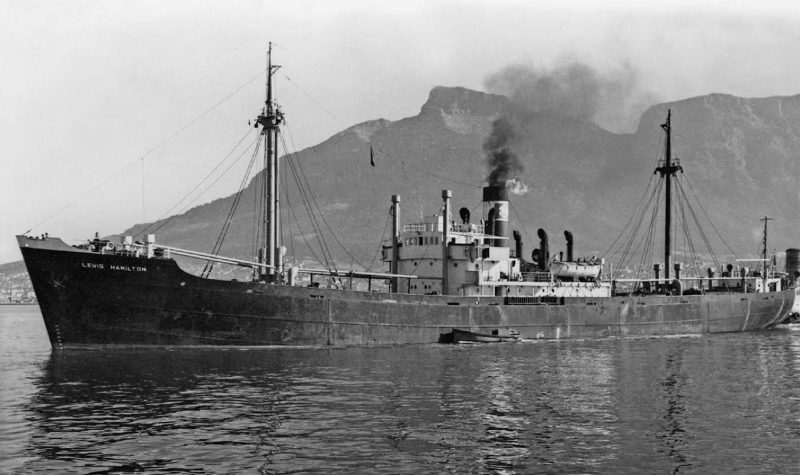
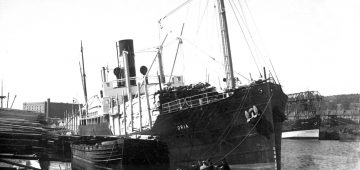
Comments
Sorry, comments are closed for this item